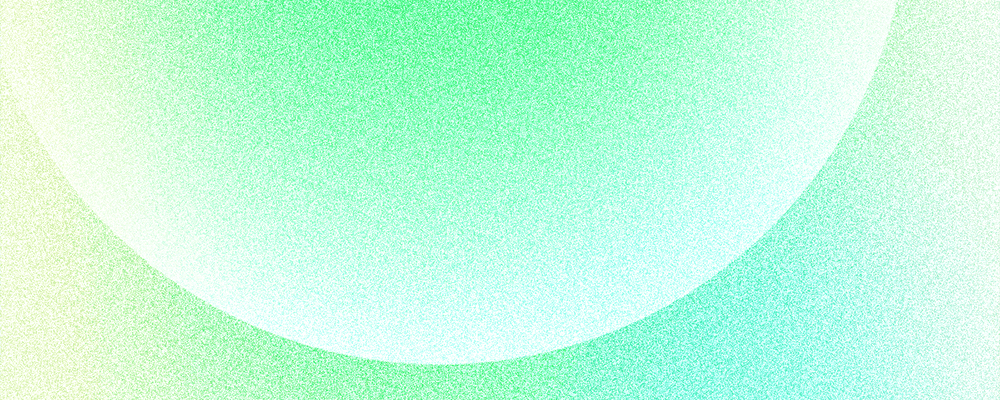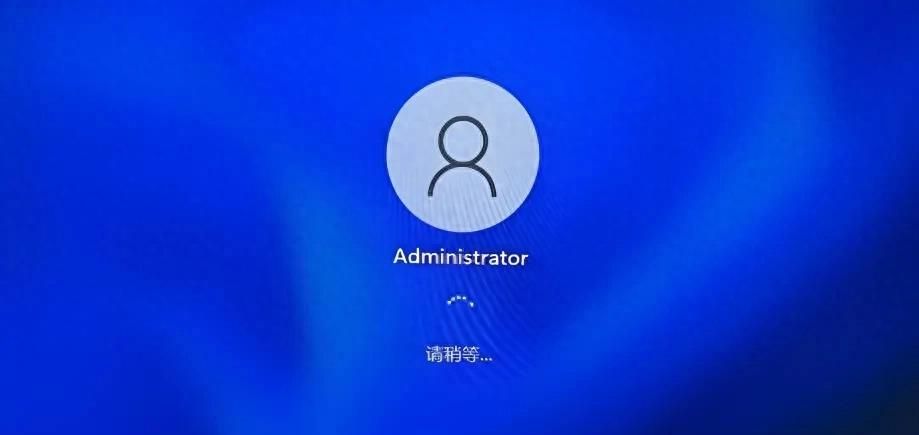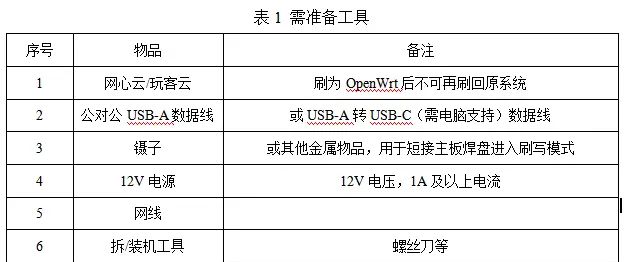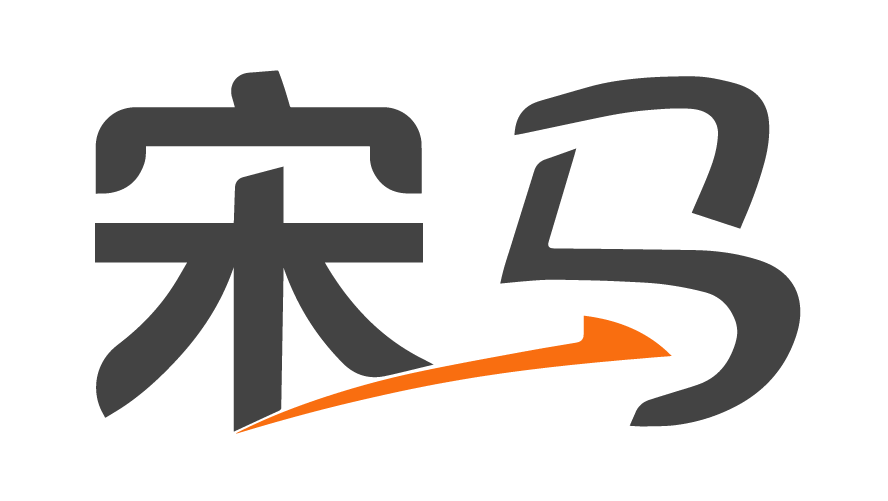碰撞及刚体动力学
物理系统是现代游戏引擎的核心组成部分,为游戏世界提供真实感和交互性。本章将深入探讨碰撞检测和刚体动力学的基本原理、实现方法以及如何将它们整合到游戏引擎中。
12.1 你想在游戏中加入物理吗?
12.1.1 物理系统的作用与价值
物理系统能够为游戏带来以下好处:
真实感:使游戏世界中的物体表现符合现实世界的物理规律
交互性:允许玩家以自然直观的方式与游戏世界互动
创造性:为玩家提供基于物理的创造性解决问题的机会
自动化行为:减少预先编写的动画需求,让物体自然地响应外力
然而,物理系统也带来了一些挑战:
性能开销:物理计算通常很耗费计算资源
复杂性:物理系统的实现和调试较为复杂
不可预测性:物理模拟可能导致不可预测的结果,影响游戏设计
调教难度:需要精细调节以平衡现实性和游戏性
12.1.2 物理引擎的核心组件
一个完整的物理引擎通常包含以下核心组件:
碰撞检测系统:检测物体之间的交叉和接触
刚体动力学系统:模拟物体的运动和旋转
约束求解器:处理物体之间的各种约束
材质系统:定义物体的物理属性,如摩擦力和弹性
积分器:推进物理世界的时间
下面是一个简单的物理引擎基础架构示例:
cpp
// 物理引擎基础架构
class PhysicsEngine {
public:
PhysicsEngine();
~PhysicsEngine();
// 初始化物理引擎
bool Initialize();
// 更新物理世界
void Update(float deltaTime);
// 创建刚体
RigidBody* CreateRigidBody(const RigidBodyDesc& desc);
// 创建碰撞形状
CollisionShape* CreateShape(const ShapeDesc& desc);
// 射线检测
bool RayCast(const Ray& ray, RayCastResult& result);
// 设置重力
void SetGravity(const Vector3& gravity);
// 获取重力
Vector3 GetGravity() const;
// 清理资源
void Cleanup();
private:
// 重力向量
Vector3 gravity;
// 刚体列表
std::vector<RigidBody*> rigidBodies;
// 碰撞形状列表
std::vector<CollisionShape*> collisionShapes;
// 碰撞检测系统
CollisionSystem* collisionSystem;
// 动力学求解器
DynamicsSolver* dynamicsSolver;
// 约束求解器
ConstraintSolver* constraintSolver;
// 物理世界的其他属性
float fixedTimeStep;
int maxSubSteps;
};
12.1.3 物理引擎的设计理念
设计一个高效的物理引擎需要考虑以下几点:
准确性与性能的权衡:物理模拟的准确性通常与性能成反比
离散时间步长:使用固定的时间步长可以提高稳定性
迭代求解方法:许多物理问题通过迭代方法而非直接求解
缓存友好的数据结构:设计结构时考虑CPU缓存和内存局部性
可调节的精度:根据不同物体的重要性调整模拟精度
下面是一个物理引擎更新循环的示例:
cpp
void PhysicsEngine::Update(float deltaTime) {
// 使用固定时间步长进行子步更新
float timeLeft = deltaTime;
int subSteps = 0;
while (timeLeft > 0.0f && subSteps < maxSubSteps) {
float dt = std::min(timeLeft, fixedTimeStep);
// 1. 更新所有刚体的状态
for (auto body : rigidBodies) {
if (body->IsActive()) {
body->IntegrateForces(dt);
}
}
// 2. 执行碰撞检测
collisionSystem->DetectCollisions();
// 3. 解决碰撞约束
constraintSolver->SolveConstraints(dt);
// 4. 更新所有刚体的位置
for (auto body : rigidBodies) {
if (body->IsActive()) {
body->IntegrateVelocities(dt);
}
}
timeLeft -= dt;
subSteps++;
}
}
12.2 碰撞/物理中间件
许多游戏开发者选择使用现有的物理中间件而非从头开发物理引擎。主流的物理中间件包括PhysX、Havok、Bullet Physics等。
12.2.1 为什么使用物理中间件?
使用物理中间件的主要优势:
减少开发时间:无需从头开发复杂的物理系统
优化的性能:商业中间件通常经过广泛优化,支持多线程和SIMD指令
跨平台支持:主流物理中间件支持多种平台
成熟的功能集:提供全面的物理功能,如碰撞检测、约束、布料和流体等
可靠性:经过大量商业游戏的验证和测试
12.2.2 物理中间件的集成
以下是将Bullet物理引擎集成到游戏引擎的示例:
cpp
// Bullet物理引擎包装器
class BulletPhysicsEngine : public IPhysicsEngine {
public:
BulletPhysicsEngine() :
collisionConfiguration(nullptr),
dispatcher(nullptr),
broadphase(nullptr),
solver(nullptr),
dynamicsWorld(nullptr) {}
~BulletPhysicsEngine() {
Cleanup();
}
bool Initialize() override {
// 创建碰撞配置
collisionConfiguration = new btDefaultCollisionConfiguration();
// 创建碰撞调度器
dispatcher = new btCollisionDispatcher(collisionConfiguration);
// 创建宽阶段碰撞检测
broadphase = new btDbvtBroadphase();
// 创建约束求解器
solver = new btSequentialImpulseConstraintSolver();
// 创建动力学世界
dynamicsWorld = new btDiscreteDynamicsWorld(
dispatcher, broadphase, solver, collisionConfiguration);
// 设置重力
dynamicsWorld->setGravity(btVector3(0, -9.81f, 0));
return true;
}
void Update(float deltaTime) override {
if (dynamicsWorld) {
dynamicsWorld->stepSimulation(deltaTime, 10);
}
}
RigidBody* CreateRigidBody(const RigidBodyDesc& desc) override {
// 创建Bullet刚体
btCollisionShape* shape = FindOrCreateShape(desc.shapeDesc);
btVector3 localInertia(0, 0, 0);
if (desc.mass > 0.0f) {
shape->calculateLocalInertia(desc.mass, localInertia);
}
btTransform transform;
transform.setIdentity();
transform.setOrigin(ConvertToBullet(desc.position));
transform.setRotation(ConvertToBullet(desc.rotation));
btDefaultMotionState* motionState =
new btDefaultMotionState(transform);
btRigidBody::btRigidBodyConstructionInfo rbInfo(
desc.mass, motionState, shape, localInertia);
btRigidBody* bulletBody = new btRigidBody(rbInfo);
dynamicsWorld->addRigidBody(bulletBody);
// 创建我们的RigidBody包装器
BulletRigidBody* body = new BulletRigidBody(bulletBody);
rigidBodies.push_back(body);
return body;
}
// 其他接口方法实现...
void Cleanup() override {
// 释放刚体
for (auto body : rigidBodies) {
dynamicsWorld->removeRigidBody(static_cast<BulletRigidBody*>(body)->GetBulletBody());
delete body;
}
rigidBodies.clear();
// 释放碰撞形状
for (auto& pair : shapes) {
delete pair.second;
}
shapes.clear();
// 释放Bullet组件
delete dynamicsWorld;
delete solver;
delete broadphase;
delete dispatcher;
delete collisionConfiguration;
dynamicsWorld = nullptr;
solver = nullptr;
broadphase = nullptr;
dispatcher = nullptr;
collisionConfiguration = nullptr;
}
private:
// Bullet组件
btDefaultCollisionConfiguration* collisionConfiguration;
btCollisionDispatcher* dispatcher;
btBroadphaseInterface* broadphase;
btSequentialImpulseConstraintSolver* solver;
btDiscreteDynamicsWorld* dynamicsWorld;
// 刚体列表
std::vector<RigidBody*> rigidBodies;
// 碰撞形状缓存
std::unordered_map<ShapeDesc, btCollisionShape*, ShapeDescHash> shapes;
// 辅助函数:查找或创建碰撞形状
btCollisionShape* FindOrCreateShape(const ShapeDesc& desc) {
auto it = shapes.find(desc);
if (it != shapes.end()) {
return it->second;
}
btCollisionShape* shape = nullptr;
switch (desc.type) {
case ShapeType::Box:
shape = new btBoxShape(ConvertToBullet(desc.box.halfExtents));
break;
case ShapeType::Sphere:
shape = new btSphereShape(desc.sphere.radius);
break;
case ShapeType::Capsule:
shape = new btCapsuleShape(desc.capsule.radius, desc.capsule.height);
break;
// 其他形状类型...
}
if (shape) {
shapes[desc] = shape;
}
return shape;
}
// 坐标转换辅助函数
static btVector3 ConvertToBullet(const Vector3& v) {
return btVector3(v.x, v.y, v.z);
}
static btQuaternion ConvertToBullet(const Quaternion& q) {
return btQuaternion(q.x, q.y, q.z, q.w);
}
};
12.2.3 自定义物理与中间件的集成
有时候需要将自定义物理逻辑与中间件集成。这里是一个例子,展示如何将自定义运动控制器与物理中间件结合:
cpp
// 角色控制器,集成物理中间件
class CharacterController {
public:
CharacterController(PhysicsEngine* engine, const Vector3& position, float radius, float height) {
// 创建胶囊体形状
ShapeDesc shapeDesc;
shapeDesc.type = ShapeType::Capsule;
shapeDesc.capsule.radius = radius;
shapeDesc.capsule.height = height;
// 创建刚体描述
RigidBodyDesc bodyDesc;
bodyDesc.mass = 80.0f; // 80kg
bodyDesc.position = position;
bodyDesc.rotation = Quaternion::Identity();
bodyDesc.shapeDesc = shapeDesc;
// 创建刚体
rigidBody = engine->CreateRigidBody(bodyDesc);
// 配置刚体属性
rigidBody->SetFriction(0.5f);
rigidBody->SetRestitution(0.0f);
// 禁用刚体旋转,保持角色直立
rigidBody->SetAngularFactor(Vector3(0, 0, 0));
this->radius = radius;
this->height = height;
this->physicsEngine = engine;
}
void Update(float deltaTime, const Vector3& moveDirection, bool jump) {
// 获取当前状态
Vector3 position = rigidBody->GetPosition();
Vector3 velocity = rigidBody->GetLinearVelocity();
// 检查是否接地
bool grounded = CheckGrounded();
// 处理移动
if (moveDirection.LengthSquared() > 0.01f) {
Vector3 targetVelocity = moveDirection * moveSpeed;
// 只改变水平速度,保留垂直速度
Vector3 velocityChange;
velocityChange.x = targetVelocity.x - velocity.x;
velocityChange.z = targetVelocity.z - velocity.z;
// 施加水平力
rigidBody->ApplyImpulse(velocityChange * rigidBody->GetMass());
}
// 处理跳跃
if (jump && grounded) {
Vector3 jumpImpulse(0, jumpForce * rigidBody->GetMass(), 0);
rigidBody->ApplyImpulse(jumpImpulse);
}
}
Vector3 GetPosition() const {
return rigidBody->GetPosition();
}
Vector3 GetVelocity() const {
return rigidBody->GetLinearVelocity();
}
private:
bool CheckGrounded() {
// 执行射线检测确定角色是否接地
Vector3 start = rigidBody->GetPosition();
Vector3 end = start - Vector3(0, radius + 0.1f, 0);
RayCastResult result;
if (physicsEngine->RayCast(Ray(start, end), result)) {
// 忽略与自身的碰撞
if (result.body != rigidBody) {
return true;
}
}
return false;
}
RigidBody* rigidBody;
PhysicsEngine* physicsEngine;
float radius;
float height;
float moveSpeed = 5.0f;
float jumpForce = 5.0f;
};
12.3 碰撞检测系统
碰撞检测是物理引擎的基础,负责确定物体之间是否发生接触以及接触的具体情况。
12.3.1 碰撞检测的基本阶段
碰撞检测通常分为三个阶段:
宽阶段(Broad Phase):快速筛选可能碰撞的物体对
中阶段(Mid Phase):对复杂物体进行更精确的包围体检测
窄阶段(Narrow Phase):精确计算碰撞点、法线和穿透深度
以下是一个简单的碰撞检测系统实现:
cpp
// 碰撞检测系统
class CollisionSystem {
public:
CollisionSystem() : broadPhase(nullptr) {}
bool Initialize() {
// 创建宽阶段算法(这里使用动态边界体积树)
broadPhase = new DynamicAABBTree();
return true;
}
void AddCollider(Collider* collider) {
colliders.push_back(collider);
// 将碰撞体添加到宽阶段
if (broadPhase) {
AABB aabb = collider->ComputeAABB();
int proxyId = broadPhase->CreateProxy(aabb, collider);
colliderProxyMap[collider] = proxyId;
}
}
void RemoveCollider(Collider* collider) {
auto it = std::find(colliders.begin(), colliders.end(), collider);
if (it != colliders.end()) {
colliders.erase(it);
// 从宽阶段移除
auto proxyIt = colliderProxyMap.find(collider);
if (proxyIt != colliderProxyMap.end()) {
broadPhase->DestroyProxy(proxyIt->second);
colliderProxyMap.erase(proxyIt);
}
}
}
void UpdateCollider(Collider* collider) {
// 更新宽阶段中的AABB
auto proxyIt = colliderProxyMap.find(collider);
if (proxyIt != colliderProxyMap.end()) {
AABB aabb = collider->ComputeAABB();
broadPhase->UpdateProxy(proxyIt->second, aabb);
}
}
void DetectCollisions() {
// 清除上一帧的碰撞结果
collisionPairs.clear();
// 宽阶段碰撞检测
BroadPhaseCollisions();
// 窄阶段碰撞检测
NarrowPhaseCollisions();
}
// 获取碰撞结果
const std::vector<CollisionPair>& GetCollisionPairs() const {
return collisionPairs;
}
// 射线检测
bool RayCast(const Ray& ray, RayCastResult& result) {
bool hit = false;
float closestHit = std::numeric_limits<float>::max();
// 使用宽阶段加速射线检测
broadPhase->RayCast(ray, [&](int proxyId) {
Collider* collider = static_cast<Collider*>(broadPhase->GetUserData(proxyId));
RayCastResult tempResult;
if (collider->RayCast(ray, tempResult) && tempResult.distance < closestHit) {
closestHit = tempResult.distance;
result = tempResult;
hit = true;
}
// 继续射线检测
return true;
});
return hit;
}
// 清理资源
void Cleanup() {
delete broadPhase;
broadPhase = nullptr;
colliders.clear();
colliderProxyMap.clear();
collisionPairs.clear();
}
private:
// 宽阶段碰撞检测
void BroadPhaseCollisions() {
// 使用宽阶段算法找出潜在的碰撞对
broadPhase->ComputeOverlappingPairs([this](int proxyIdA, int proxyIdB) {
Collider* colliderA = static_cast<Collider*>(broadPhase->GetUserData(proxyIdA));
Collider* colliderB = static_cast<Collider*>(broadPhase->GetUserData(proxyIdB));
// 将潜在碰撞对加入待检测列表
potentialPairs.emplace_back(colliderA, colliderB);
});
}
// 窄阶段碰撞检测
void NarrowPhaseCollisions() {
for (const auto& pair : potentialPairs) {
Collider* colliderA = pair.first;
Collider* colliderB = pair.second;
// 跳过不应碰撞的物体对
if (!ShouldCollide(colliderA, colliderB)) {
continue;
}
// 窄阶段碰撞检测
CollisionInfo info;
if (DetectCollision(colliderA, colliderB, info)) {
CollisionPair collisionPair;
collisionPair.colliderA = colliderA;
collisionPair.colliderB = colliderB;
collisionPair.info = info;
collisionPairs.push_back(collisionPair);
// 触发碰撞回调
colliderA->OnCollision(colliderB, info);
colliderB->OnCollision(colliderA, info);
}
}
// 清除潜在碰撞对列表,为下一帧做准备
potentialPairs.clear();
}
// 判断两个碰撞体是否应该检测碰撞
bool ShouldCollide(Collider* colliderA, Collider* colliderB) {
// 检查碰撞过滤器
return colliderA->GetCollisionFilter().ShouldCollide(colliderB->GetCollisionFilter());
}
// 检测两个碰撞体的具体碰撞情况
bool DetectCollision(Collider* colliderA, Collider* colliderB, CollisionInfo& info) {
// 根据碰撞体类型选择适当的碰撞检测算法
if (colliderA->GetType() == ColliderType::Sphere &&
colliderB->GetType() == ColliderType::Sphere) {
return DetectSphereSphereCollision(
static_cast<SphereCollider*>(colliderA),
static_cast<SphereCollider*>(colliderB),
info);
}
else if (colliderA->GetType() == ColliderType::Box &&
colliderB->GetType() == ColliderType::Box) {
return DetectBoxBoxCollision(
static_cast<BoxCollider*>(colliderA),
static_cast<BoxCollider*>(colliderB),
info);
}
// 其他碰撞类型检测...
return false;
}
// 球体与球体碰撞检测
bool DetectSphereSphereCollision(SphereCollider* sphereA, SphereCollider* sphereB,
CollisionInfo& info) {
Vector3 posA = sphereA->GetWorldPosition();
Vector3 posB = sphereB->GetWorldPosition();
float radiusA = sphereA->GetRadius();
float radiusB = sphereB->GetRadius();
Vector3 ab = posB - posA;
float distance = ab.Length();
// 检测球体是否相交
float sumRadius = radiusA + radiusB;
if (distance >= sumRadius) {
return false;
}
// 计算碰撞信息
Vector3 normal = distance > 0.0001f ? ab / distance : Vector3(0, 1, 0);
float penetration = sumRadius - distance;
// 填充碰撞信息
info.normal = normal;
info.penetration = penetration;
info.contactPoint = posA + normal * (radiusA - penetration * 0.5f);
return true;
}
// 盒子与盒子碰撞检测 (SAT算法)
bool DetectBoxBoxCollision(BoxCollider* boxA, BoxCollider* boxB,
CollisionInfo& info) {
// SAT (分离轴定理) 实现
// ...
return false; // 简化实现
}
// 碰撞体列表
std::vector<Collider*> colliders;
// 宽阶段算法
DynamicAABBTree* broadPhase;
// 碰撞体与宽阶段代理ID的映射
std::unordered_map<Collider*, int> colliderProxyMap;
// 宽阶段产生的潜在碰撞对
std::vector<std::pair<Collider*, Collider*>> potentialPairs;
// 最终的碰撞结果
std::vector<CollisionPair> collisionPairs;
};
12.3.2 宽阶段碰撞检测
宽阶段碰撞检测使用简化的边界体积快速排除不可能碰撞的物体对。常见的宽阶段算法包括:
暴力检测:O(n²)复杂度,适用于物体数量少的情况
空间分割:如网格、八叉树等
扫描与剪裁:沿一个轴排序物体
动态边界体积树:自适应树结构,常用于动态场景
以下是一个简化的动态AABB树实现:
cpp
// 动态AABB树节点
struct AABBTreeNode {
AABB aabb; // 节点的边界框
void* userData; // 用户数据(通常是碰撞体指针)
union {
int parent; // 父节点索引
int next; // 自由列表中的下一个节点
};
int left; // 左子节点索引
int right; // 右子节点索引
// 是否是叶节点
bool IsLeaf() const {
return left == -1;
}
};
// 动态AABB树实现
class DynamicAABBTree {
public:
DynamicAABBTree(int initialCapacity = 16) :
nodeCapacity(initialCapacity),
nodeCount(0),
rootIndex(-1),
freeListIndex(-1) {
// 分配节点内存
nodes = new AABBTreeNode[nodeCapacity];
// 初始化自由列表
for (int i = 0; i < nodeCapacity - 1; ++i) {
nodes[i].next = i + 1;
nodes[i].height = -1;
}
nodes[nodeCapacity - 1].next = -1;
nodes[nodeCapacity - 1].height = -1;
freeListIndex = 0;
}
~DynamicAABBTree() {
delete[] nodes;
}
// 创建代理
int CreateProxy(const AABB& aabb, void* userData) {
int proxyId = AllocateNode();
// 初始化节点
nodes[proxyId].aabb = aabb;
nodes[proxyId].userData = userData;
nodes[proxyId].height = 0;
nodes[proxyId].left = -1; // 标记为叶节点
// 插入到树中
InsertLeaf(proxyId);
return proxyId;
}
// 销毁代理
void DestroyProxy(int proxyId) {
assert(0 <= proxyId && proxyId < nodeCapacity);
assert(nodes[proxyId].IsLeaf());
RemoveLeaf(proxyId);
FreeNode(proxyId);
}
// 更新代理
void UpdateProxy(int proxyId, const AABB& aabb) {
assert(0 <= proxyId && proxyId < nodeCapacity);
assert(nodes[proxyId].IsLeaf());
RemoveLeaf(proxyId);
nodes[proxyId].aabb = aabb;
InsertLeaf(proxyId);
}
// 获取用户数据
void* GetUserData(int proxyId) const {
assert(0 <= proxyId && proxyId < nodeCapacity);
return nodes[proxyId].userData;
}
// 计算重叠的对
template<typename Callback>
void ComputeOverlappingPairs(Callback callback) {
// 使用栈来避免递归
std::vector<std::pair<int, int>> stack;
if (rootIndex == -1) {
return;
}
// 从根节点开始遍历
for (int i = 0; i < nodeCount; ++i) {
if (nodes[i].IsLeaf()) {
// 跳过已处理的节点
for (int j = i + 1; j < nodeCount; ++j) {
if (nodes[j].IsLeaf()) {
if (AABB::TestOverlap(nodes[i].aabb, nodes[j].aabb)) {
callback(i, j);
}
}
}
}
}
}
// 射线检测
template<typename Callback>
void RayCast(const Ray& ray, Callback callback) {
if (rootIndex == -1) {
return;
}
// 射线数据
Vector3 p1 = ray.origin;
Vector3 p2 = ray.origin + ray.direction * ray.maxDistance;
// 使用栈来避免递归
std::vector<int> stack;
stack.push_back(rootIndex);
while (!stack.empty()) {
int nodeIndex = stack.back();
stack.pop_back();
// 检测射线是否与AABB相交
if (!nodes[nodeIndex].aabb.RayCast(ray)) {
continue;
}
if (nodes[nodeIndex].IsLeaf()) {
// 叶节点,调用回调函数
bool proceed = callback(nodeIndex);
if (!proceed) {
break;
}
} else {
// 内部节点,继续遍历子节点
stack.push_back(nodes[nodeIndex].left);
stack.push_back(nodes[nodeIndex].right);
}
}
}
private:
// 分配节点
int AllocateNode() {
// 扩展节点数组(如果需要)
if (freeListIndex == -1) {
assert(nodeCount == nodeCapacity);
// 扩大容量
nodeCapacity *= 2;
AABBTreeNode* newNodes = new AABBTreeNode[nodeCapacity];
// 复制旧节点
memcpy(newNodes, nodes, nodeCount * sizeof(AABBTreeNode));
// 删除旧数组
delete[] nodes;
nodes = newNodes;
// 构建新的自由列表
for (int i = nodeCount; i < nodeCapacity - 1; ++i) {
nodes[i].next = i + 1;
nodes[i].height = -1;
}
nodes[nodeCapacity - 1].next = -1;
nodes[nodeCapacity - 1].height = -1;
freeListIndex = nodeCount;
}
// 从自由列表中获取节点
int nodeIndex = freeListIndex;
freeListIndex = nodes[nodeIndex].next;
nodes[nodeIndex].parent = -1;
nodes[nodeIndex].left = -1;
nodes[nodeIndex].right = -1;
nodes[nodeIndex].height = 0;
nodes[nodeIndex].userData = nullptr;
++nodeCount;
return nodeIndex;
}
// 释放节点
void FreeNode(int nodeIndex) {
assert(0 <= nodeIndex && nodeIndex < nodeCapacity);
assert(0 < nodeCount);
nodes[nodeIndex].next = freeListIndex;
nodes[nodeIndex].height = -1;
freeListIndex = nodeIndex;
--nodeCount;
}
// 插入叶节点
void InsertLeaf(int leafIndex) {
// 如果树为空,设置根节点
if (rootIndex == -1) {
rootIndex = leafIndex;
nodes[rootIndex].parent = -1;
return;
}
// 找到最佳插入位置
AABB leafAABB = nodes[leafIndex].aabb;
int index = rootIndex;
while (!nodes[index].IsLeaf()) {
int left = nodes[index].left;
int right = nodes[index].right;
float area = nodes[index].aabb.GetPerimeter();
AABB combinedAABB = AABB::Combine(nodes[index].aabb, leafAABB);
float combinedArea = combinedAABB.GetPerimeter();
// 计算代价函数
float cost = 2.0f * combinedArea;
float inheritanceCost = 2.0f * (combinedArea - area);
// 计算下降到子节点的代价
float costLeft;
if (nodes[left].IsLeaf()) {
AABB aabb = AABB::Combine(leafAABB, nodes[left].aabb);
costLeft = aabb.GetPerimeter() + inheritanceCost;
} else {
AABB aabb = AABB::Combine(leafAABB, nodes[left].aabb);
float oldArea = nodes[left].aabb.GetPerimeter();
float newArea = aabb.GetPerimeter();
costLeft = (newArea - oldArea) + inheritanceCost;
}
float costRight;
if (nodes[right].IsLeaf()) {
AABB aabb = AABB::Combine(leafAABB, nodes[right].aabb);
costRight = aabb.GetPerimeter() + inheritanceCost;
} else {
AABB aabb = AABB::Combine(leafAABB, nodes[right].aabb);
float oldArea = nodes[right].aabb.GetPerimeter();
float newArea = aabb.GetPerimeter();
costRight = (newArea - oldArea) + inheritanceCost;
}
// 确定下降方向
if (cost < costLeft && cost < costRight) {
break;
}
// 下降到子节点
if (costLeft < costRight) {
index = left;
} else {
index = right;
}
}
int sibling = index;
// 创建新的父节点
int oldParent = nodes[sibling].parent;
int newParent = AllocateNode();
nodes[newParent].parent = oldParent;
nodes[newParent].userData = nullptr;
nodes[newParent].aabb = AABB::Combine(leafAABB, nodes[sibling].aabb);
nodes[newParent].height = nodes[sibling].height + 1;
if (oldParent != -1) {
// 兄弟节点不是根节点
if (nodes[oldParent].left == sibling) {
nodes[oldParent].left = newParent;
} else {
nodes[oldParent].right = newParent;
}
nodes[newParent].left = sibling;
nodes[newParent].right = leafIndex;
nodes[sibling].parent = newParent;
nodes[leafIndex].parent = newParent;
} else {
// 兄弟节点是根节点
nodes[newParent].left = sibling;
nodes[newParent].right = leafIndex;
nodes[sibling].parent = newParent;
nodes[leafIndex].parent = newParent;
rootIndex = newParent;
}
// 向上更新AABB和高度
UpdateUpward(nodes[leafIndex].parent);
}
// 移除叶节点
void RemoveLeaf(int leafIndex) {
if (leafIndex == rootIndex) {
rootIndex = -1;
return;
}
int parentIndex = nodes[leafIndex].parent;
int grandParentIndex = nodes[parentIndex].parent;
int siblingIndex;
if (nodes[parentIndex].left == leafIndex) {
siblingIndex = nodes[parentIndex].right;
} else {
siblingIndex = nodes[parentIndex].left;
}
if (grandParentIndex != -1) {
// 将兄弟节点连接到祖父节点
if (nodes[grandParentIndex].left == parentIndex) {
nodes[grandParentIndex].left = siblingIndex;
} else {
nodes[grandParentIndex].right = siblingIndex;
}
nodes[siblingIndex].parent = grandParentIndex;
// 释放父节点
FreeNode(parentIndex);
// 向上更新AABB和高度
UpdateUpward(grandParentIndex);
} else {
// 父节点是根节点,使兄弟节点成为新的根节点
rootIndex = siblingIndex;
nodes[siblingIndex].parent = -1;
// 释放父节点
FreeNode(parentIndex);
}
}
// 向上更新AABB和高度
void UpdateUpward(int index) {
while (index != -1) {
index = BalanceNode(index);
int left = nodes[index].left;
int right = nodes[index].right;
nodes[index].height = 1 + std::max(nodes[left].height, nodes[right].height);
nodes[index].aabb = AABB::Combine(nodes[left].aabb, nodes[right].aabb);
index = nodes[index].parent;
}
}
// 平衡节点(AVL树旋转)
int BalanceNode(int index) {
if (nodes[index].IsLeaf() || nodes[index].height < 2) {
return index;
}
int left = nodes[index].left;
int right = nodes[index].right;
int balance = nodes[right].height - nodes[left].height;
// 右子树过高
if (balance > 1) {
int rightLeft = nodes[right].left;
int rightRight = nodes[right].right;
// 右-左旋转
if (nodes[rightLeft].height > nodes[rightRight].height) {
// 先右旋
// ...
// 再左旋
// ...
return rightLeft;
}
// 左旋转
// ...
return right;
}
// 左子树过高
if (balance < -1) {
int leftLeft = nodes[left].left;
int leftRight = nodes[left].right;
// 左-右旋转
if (nodes[leftRight].height > nodes[leftLeft].height) {
// 先左旋
// ...
// 再右旋
// ...
return leftRight;
}
// 右旋转
// ...
return left;
}
return index;
}
AABBTreeNode* nodes;
int nodeCapacity;
int nodeCount;
int rootIndex;
int freeListIndex;
};
12.3.3 窄阶段碰撞检测
窄阶段碰撞检测负责精确计算两个物体之间的碰撞情况。以下是一些常见的基本碰撞检测算法:
球体与球体碰撞
cpp
bool TestSphereSphereCollision(const Sphere& sphereA, const Sphere& sphereB,
CollisionInfo& info) {
Vector3 posA = sphereA.center;
Vector3 posB = sphereB.center;
float radiusA = sphereA.radius;
float radiusB = sphereB.radius;
Vector3 ab = posB - posA;
float distanceSquared = ab.LengthSquared();
float sumRadius = radiusA + radiusB;
// 快速平方检测
if (distanceSquared >= sumRadius * sumRadius) {
return false; // 没有碰撞
}
// 计算实际距离
float distance = sqrt(distanceSquared);
// 填充碰撞信息
Vector3 normal = distance > 0.0001f ? ab / distance : Vector3(0, 1, 0);
float penetration = sumRadius - distance;
info.normal = normal;
info.penetration = penetration;
info.contactPoint = posA + normal * (radiusA - penetration * 0.5f);
return true;
}
分离轴定理(SAT)用于凸多面体
cpp
bool TestBoxBoxCollisionSAT(const Box& boxA, const Box& boxB, CollisionInfo& info) {
// 获取两个盒子的变换
const Transform& transformA = boxA.transform;
const Transform& transformB = boxB.transform;
// 计算盒子A的局部坐标轴(在世界空间中)
Vector3 axisA[3] = {
transformA.TransformDirection(Vector3(1, 0, 0)),
transformA.TransformDirection(Vector3(0, 1, 0)),
transformA.TransformDirection(Vector3(0, 0, 1))
};
// 计算盒子B的局部坐标轴(在世界空间中)
Vector3 axisB[3] = {
transformB.TransformDirection(Vector3(1, 0, 0)),
transformB.TransformDirection(Vector3(0, 1, 0)),
transformB.TransformDirection(Vector3(0, 0, 1))
};
// 盒子中心点
Vector3 centerA = transformA.position;
Vector3 centerB = transformB.position;
// 盒子半尺寸
Vector3 halfSizeA = boxA.halfSize;
Vector3 halfSizeB = boxB.halfSize;
// 盒子中心距离向量
Vector3 t = centerB - centerA;
// 最小渗透深度和对应的轴
float minPenetration = std::numeric_limits<float>::max();
Vector3 bestAxis;
// 测试盒子A的3个轴
for (int i = 0; i < 3; ++i) {
float penetration = TestAxis(axisA[i], t, axisA, axisB, halfSizeA, halfSizeB);
if (penetration < 0) {
return false; // 找到分离轴,无碰撞
}
if (penetration < minPenetration) {
minPenetration = penetration;
bestAxis = axisA[i];
}
}
// 测试盒子B的3个轴
for (int i = 0; i < 3; ++i) {
float penetration = TestAxis(axisB[i], t, axisA, axisB, halfSizeA, halfSizeB);
if (penetration < 0) {
return false; // 找到分离轴,无碰撞
}
if (penetration < minPenetration) {
minPenetration = penetration;
bestAxis = axisB[i];
}
}
// 测试9个叉积轴
for (int i = 0; i < 3; ++i) {
for (int j = 0; j < 3; ++j) {
Vector3 axis = Vector3::Cross(axisA[i], axisB[j]);
float length = axis.Length();
// 跳过平行轴
if (length < 0.0001f) {
continue;
}
axis = axis / length; // 归一化
float penetration = TestAxis(axis, t, axisA, axisB, halfSizeA, halfSizeB);
if (penetration < 0) {
return false; // 找到分离轴,无碰撞
}
if (penetration < minPenetration) {
minPenetration = penetration;
bestAxis = axis;
}
}
}
// 确保法线指向从A到B
Vector3 normal = bestAxis;
if (Vector3::Dot(t, normal) < 0) {
normal = -normal;
}
// 填充碰撞信息
info.normal = normal;
info.penetration = minPenetration;
// 计算接触点(简化版本)
info.contactPoint = centerA + t * 0.5f;
return true;
}
// 在给定轴上测试两个盒子的投影
float TestAxis(const Vector3& axis, const Vector3& t,
const Vector3 axisA[3], const Vector3 axisB[3],
const Vector3& halfSizeA, const Vector3& halfSizeB) {
// 计算盒子A在axis上的投影半长度
float projA =
halfSizeA.x * std::abs(Vector3::Dot(axis, axisA[0])) +
halfSizeA.y * std::abs(Vector3::Dot(axis, axisA[1])) +
halfSizeA.z * std::abs(Vector3::Dot(axis, axisA[2]));
// 计算盒子B在axis上的投影半长度
float projB =
halfSizeB.x * std::abs(Vector3::Dot(axis, axisB[0])) +
halfSizeB.y * std::abs(Vector3::Dot(axis, axisB[1])) +
halfSizeB.z * std::abs(Vector3::Dot(axis, axisB[2]));
// 计算两个中心在axis上的距离
float distance = std::abs(Vector3::Dot(t, axis));
// 计算重叠
return projA + projB - distance;
}
12.3.4 碰撞过滤
碰撞过滤允许开发者控制哪些物体可以相互碰撞:
cpp
// 碰撞过滤器
struct CollisionFilter {
uint32_t categoryBits; // 物体所属的类别位掩码
uint32_t maskBits; // 物体可以碰撞的类别位掩码
int16_t groupIndex; // 组索引(负值表示不碰撞)
CollisionFilter() :
categoryBits(0x0001), maskBits(0xFFFF), groupIndex(0) {}
// 判断两个过滤器是否应该碰撞
bool ShouldCollide(const CollisionFilter& other) const {
// 负组索引表示同组物体不碰撞
if (groupIndex != 0 && groupIndex == other.groupIndex) {
return groupIndex > 0;
}
// 检查类别和掩码
return (categoryBits & other.maskBits) != 0 &&
(maskBits & other.categoryBits) != 0;
}
};
// 预定义的碰撞类别(示例)
namespace CollisionCategory {
constexpr uint32_t Default = 0x0001;
constexpr uint32_t Player = 0x0002;
constexpr uint32_t Enemy = 0x0004;
constexpr uint32_t Projectile = 0x0008;
constexpr uint32_t Sensor = 0x0010;
constexpr uint32_t Environment = 0x0020;
constexpr uint32_t Trigger = 0x0040;
constexpr uint32_t All = 0xFFFF;
}
12.4 刚体动力学
刚体动力学负责模拟物体的运动,包括平移和旋转。
12.4.1 刚体运动方程
刚体运动由以下方程描述:
线性运动:
F = ma(牛顿第二定律)
v = v₀ + at(速度更新)
p = p₀ + vt + ½at²(位置更新)
角运动:
τ = Iα(转矩等于转动惯量乘以角加速度)
ω = ω₀ + αt(角速度更新)
θ = θ₀ + ωt + ½αt²(角度更新)
以下是一个简单的刚体实现:
cpp
// 刚体类
class RigidBody {
public:
RigidBody() :
mass(1.0f),
inverseMass(1.0f),
inertia(Vector3(1.0f, 1.0f, 1.0f)),
inverseInertia(Vector3(1.0f, 1.0f, 1.0f)),
linearDamping(0.01f),
angularDamping(0.01f),
restitution(0.5f),
friction(0.5f),
position(Vector3::Zero()),
rotation(Quaternion::Identity()),
linearVelocity(Vector3::Zero()),
angularVelocity(Vector3::Zero()),
force(Vector3::Zero()),
torque(Vector3::Zero()),
isStatic(false),
isActive(true) {}
// 更新力和转矩(施加外力)
void ApplyForce(const Vector3& worldForce) {
if (isStatic) return;
force += worldForce;
}
void ApplyForceAtPoint(const Vector3& worldForce, const Vector3& worldPoint) {
if (isStatic) return;
force += worldForce;
torque += Vector3::Cross(worldPoint - position, worldForce);
}
void ApplyTorque(const Vector3& worldTorque) {
if (isStatic) return;
torque += worldTorque;
}
void ApplyImpulse(const Vector3& impulse) {
if (isStatic) return;
linearVelocity += impulse * inverseMass;
}
void ApplyImpulseAtPoint(const Vector3& impulse, const Vector3& worldPoint) {
if (isStatic) return;
linearVelocity += impulse * inverseMass;
Vector3 relativePos = worldPoint - position;
Vector3 angularImpulse = Vector3::Cross(relativePos, impulse);
// 将世界空间的角冲量转换为本地空间
Matrix3x3 invInertiaTensor = GetInverseInertiaTensorWorld();
Vector3 deltaOmega = invInertiaTensor * angularImpulse;
angularVelocity += deltaOmega;
}
// 积分更新力(第一阶段)
void IntegrateForces(float dt) {
if (isStatic || !isActive) return;
// 更新线性速度
Vector3 linearAcceleration = force * inverseMass;
linearVelocity += linearAcceleration * dt;
// 应用线性阻尼
linearVelocity *= pow(1.0f - linearDamping, dt);
// 更新角速度
Matrix3x3 invInertiaTensor = GetInverseInertiaTensorWorld();
Vector3 angularAcceleration = invInertiaTensor * torque;
angularVelocity += angularAcceleration * dt;
// 应用角阻尼
angularVelocity *= pow(1.0f - angularDamping, dt);
// 重置力和转矩
force = Vector3::Zero();
torque = Vector3::Zero();
}
// 积分更新位置(第二阶段)
void IntegrateVelocities(float dt) {
if (isStatic || !isActive) return;
// 更新位置
position += linearVelocity * dt;
// 更新旋转(使用四元数微分方程)
Quaternion spin(angularVelocity.x, angularVelocity.y, angularVelocity.z, 0.0f);
Quaternion velocityQ = spin * rotation * 0.5f;
rotation += velocityQ * dt;
rotation = Quaternion::Normalize(rotation);
}
// 获取世界空间中的逆惯性张量
Matrix3x3 GetInverseInertiaTensorWorld() const {
// 从本地惯性张量构建对角矩阵
Matrix3x3 localInvInertia = Matrix3x3::Zero();
localInvInertia.m[0][0] = inverseInertia.x;
localInvInertia.m[1][1] = inverseInertia.y;
localInvInertia.m[2][2] = inverseInertia.z;
// 构建旋转矩阵
Matrix3x3 rotMatrix = Matrix3x3::CreateFromQuaternion(rotation);
// 转换到世界空间:R * I^-1 * R^T
Matrix3x3 result = rotMatrix * localInvInertia * Matrix3x3::Transpose(rotMatrix);
return result;
}
// 设置质量和惯性张量
void SetMass(float m) {
if (m <= 0.0f) {
// 质量为0表示静态物体
mass = 0.0f;
inverseMass = 0.0f;
isStatic = true;
} else {
mass = m;
inverseMass = 1.0f / m;
isStatic = false;
}
}
void SetInertia(const Vector3& i) {
inertia = i;
inverseInertia = Vector3(
i.x != 0.0f ? 1.0f / i.x : 0.0f,
i.y != 0.0f ? 1.0f / i.y : 0.0f,
i.z != 0.0f ? 1.0f / i.z : 0.0f
);
}
// 计算盒体的惯性张量
void ComputeBoxInertia(const Vector3& boxSize) {
float m = mass;
float x2 = boxSize.x * boxSize.x;
float y2 = boxSize.y * boxSize.y;
float z2 = boxSize.z * boxSize.z;
inertia.x = (1.0f / 12.0f) * m * (y2 + z2);
inertia.y = (1.0f / 12.0f) * m * (x2 + z2);
inertia.z = (1.0f / 12.0f) * m * (x2 + y2);
inverseInertia.x = inertia.x != 0.0f ? 1.0f / inertia.x : 0.0f;
inverseInertia.y = inertia.y != 0.0f ? 1.0f / inertia.y : 0.0f;
inverseInertia.z = inertia.z != 0.0f ? 1.0f / inertia.z : 0.0f;
}
// 活动状态控制
void SetActive(bool active) {
isActive = active;
}
bool IsActive() const {
return isActive;
}
bool IsStatic() const {
return isStatic;
}
// 获取和设置物理属性
float GetMass() const { return mass; }
float GetInverseMass() const { return inverseMass; }
void SetLinearDamping(float damping) { linearDamping = damping; }
float GetLinearDamping() const { return linearDamping; }
void SetAngularDamping(float damping) { angularDamping = damping; }
float GetAngularDamping() const { return angularDamping; }
void SetRestitution(float r) { restitution = r; }
float GetRestitution() const { return restitution; }
void SetFriction(float f) { friction = f; }
float GetFriction() const { return friction; }
// 运动学状态访问器
Vector3 GetPosition() const { return position; }
void SetPosition(const Vector3& pos) { position = pos; }
Quaternion GetRotation() const { return rotation; }
void SetRotation(const Quaternion& rot) { rotation = rot; }
Vector3 GetLinearVelocity() const { return linearVelocity; }
void SetLinearVelocity(const Vector3& vel) { linearVelocity = vel; }
Vector3 GetAngularVelocity() const { return angularVelocity; }
void SetAngularVelocity(const Vector3& vel) { angularVelocity = vel; }
// 坐标转换
Vector3 GetPointVelocity(const Vector3& worldPoint) const {
Vector3 relativePos = worldPoint - position;
return linearVelocity + Vector3::Cross(angularVelocity, relativePos);
}
Vector3 WorldToLocalPoint(const Vector3& worldPoint) const {
Vector3 relativePos = worldPoint - position;
Quaternion invRotation = Quaternion::Inverse(rotation);
return Quaternion::RotateVector(invRotation, relativePos);
}
Vector3 LocalToWorldPoint(const Vector3& localPoint) const {
return position + Quaternion::RotateVector(rotation, localPoint);
}
Vector3 WorldToLocalDirection(const Vector3& worldDir) const {
Quaternion invRotation = Quaternion::Inverse(rotation);
return Quaternion::RotateVector(invRotation, worldDir);
}
Vector3 LocalToWorldDirection(const Vector3& localDir) const {
return Quaternion::RotateVector(rotation, localDir);
}
private:
// 物理属性
float mass;
float inverseMass;
Vector3 inertia;
Vector3 inverseInertia;
float linearDamping;
float angularDamping;
float restitution;
float friction;
// 运动学状态
Vector3 position;
Quaternion rotation;
Vector3 linearVelocity;
Vector3 angularVelocity;
// 累积的力和转矩
Vector3 force;
Vector3 torque;
// 标志
bool isStatic;
bool isActive;
};
12.4.2 约束解算
约束求解器负责处理碰撞约束和用户定义的约束。以下是一个简单的顺序冲量约束求解器:
cpp
// 碰撞约束
struct ContactConstraint {
RigidBody* bodyA;
RigidBody* bodyB;
Vector3 contactPoint;
Vector3 normal;
float penetration;
float restitution;
float friction;
// 用于解算的数据
Vector3 relPosA;
Vector3 relPosB;
float normalMass;
Vector3 tangentMass;
float bias;
float normalImpulse;
Vector3 tangentImpulse;
};
// 约束求解器
class ConstraintSolver {
public:
ConstraintSolver() : velocityIterations(10), positionIterations(4) {}
void SetIterations(int velocityIter, int positionIter) {
velocityIterations = velocityIter;
positionIterations = positionIter;
}
// 解决碰撞约束
void SolveConstraints(const std::vector<ContactConstraint>& constraints, float dt) {
// 预计算约束参数
PrepareConstraints(constraints, dt);
// 速度迭代
for (int i = 0; i < velocityIterations; ++i) {
SolveVelocityConstraints(constraints);
}
// 位置迭代
for (int i = 0; i < positionIterations; ++i) {
SolvePositionConstraints(constraints);
}
}
private:
int velocityIterations;
int positionIterations;
// 预计算约束参数
void PrepareConstraints(const std::vector<ContactConstraint>& constraints, float dt) {
const float baumgarte = 0.2f; // Baumgarte因子
const float allowedPenetration = 0.01f; // 允许的穿透深度
for (auto& constraint : const_cast<std::vector<ContactConstraint>&>(constraints)) {
RigidBody* bodyA = constraint.bodyA;
RigidBody* bodyB = constraint.bodyB;
// 相对接触点
constraint.relPosA = constraint.contactPoint - bodyA->GetPosition();
constraint.relPosB = constraint.contactPoint - bodyB->GetPosition();
// 计算法向质量
Vector3 raCrossN = Vector3::Cross(constraint.relPosA, constraint.normal);
Vector3 rbCrossN = Vector3::Cross(constraint.relPosB, constraint.normal);
Matrix3x3 invInertiaA = bodyA->GetInverseInertiaTensorWorld();
Matrix3x3 invInertiaB = bodyB->GetInverseInertiaTensorWorld();
Vector3 angularFactorA = invInertiaA * raCrossN;
Vector3 angularFactorB = invInertiaB * rbCrossN;
float invMassA = bodyA->GetInverseMass();
float invMassB = bodyB->GetInverseMass();
float invMassSum = invMassA + invMassB;
// 计算角因子的点积
float angularMass = Vector3::Dot(raCrossN, angularFactorA) +
Vector3::Dot(rbCrossN, angularFactorB);
float totalMass = invMassSum + angularMass;
constraint.normalMass = totalMass > 0.0f ? 1.0f / totalMass : 0.0f;
// 计算切向质量
// ... (类似的计算)
// 计算速度偏移(弹性)
Vector3 velA = bodyA->GetLinearVelocity() +
Vector3::Cross(bodyA->GetAngularVelocity(), constraint.relPosA);
Vector3 velB = bodyB->GetLinearVelocity() +
Vector3::Cross(bodyB->GetAngularVelocity(), constraint.relPosB);
Vector3 relVel = velB - velA;
float normalVel = Vector3::Dot(relVel, constraint.normal);
// 计算位置偏移(穿透修正)
float penetration = constraint.penetration - allowedPenetration;
float positionCorrection = baumgarte * penetration / dt;
constraint.bias = -constraint.restitution * normalVel + positionCorrection;
// 清空累积冲量
constraint.normalImpulse = 0.0f;
constraint.tangentImpulse = Vector3::Zero();
}
}
// 解决速度约束
void SolveVelocityConstraints(const std::vector<ContactConstraint>& constraints) {
for (auto& constraint : const_cast<std::vector<ContactConstraint>&>(constraints)) {
RigidBody* bodyA = constraint.bodyA;
RigidBody* bodyB = constraint.bodyB;
// 法向约束求解
{
// 计算相对速度
Vector3 velA = bodyA->GetLinearVelocity() +
Vector3::Cross(bodyA->GetAngularVelocity(), constraint.relPosA);
Vector3 velB = bodyB->GetLinearVelocity() +
Vector3::Cross(bodyB->GetAngularVelocity(), constraint.relPosB);
Vector3 relVel = velB - velA;
float normalVel = Vector3::Dot(relVel, constraint.normal);
// 计算冲量
float impulseMagnitude = constraint.normalMass * (-normalVel + constraint.bias);
// 累积冲量约束
float oldImpulse = constraint.normalImpulse;
constraint.normalImpulse = std::max(oldImpulse + impulseMagnitude, 0.0f);
impulseMagnitude = constraint.normalImpulse - oldImpulse;
// 应用冲量
Vector3 impulse = constraint.normal * impulseMagnitude;
bodyA->ApplyImpulse(-impulse);
bodyA->ApplyTorque(-Vector3::Cross(constraint.relPosA, impulse));
bodyB->ApplyImpulse(impulse);
bodyB->ApplyTorque(Vector3::Cross(constraint.relPosB, impulse));
}
// 摩擦约束求解
// ... (类似的处理)
}
}
// 解决位置约束
void SolvePositionConstraints(const std::vector<ContactConstraint>& constraints) {
const float allowedPenetration = 0.01f;
for (auto& constraint : const_cast<std::vector<ContactConstraint>&>(constraints)) {
RigidBody* bodyA = constraint.bodyA;
RigidBody* bodyB = constraint.bodyB;
Vector3 posA = bodyA->GetPosition();
Quaternion rotA = bodyA->GetRotation();
Vector3 posB = bodyB->GetPosition();
Quaternion rotB = bodyB->GetRotation();
// 计算当前接触点位置
Vector3 relPosA = Quaternion::RotateVector(rotA,
bodyA->WorldToLocalPoint(constraint.contactPoint));
Vector3 relPosB = Quaternion::RotateVector(rotB,
bodyB->WorldToLocalPoint(constraint.contactPoint));
Vector3 worldPosA = posA + Quaternion::RotateVector(rotA, relPosA);
Vector3 worldPosB = posB + Quaternion::RotateVector(rotB, relPosB);
// 计算当前穿透
Vector3 penetrationVector = worldPosB - worldPosA;
float penetration = Vector3::Dot(penetrationVector, constraint.normal);
// 如果穿透小于允许值,跳过
if (penetration >= -allowedPenetration) {
continue;
}
// 计算质量
float invMassA = bodyA->GetInverseMass();
float invMassB = bodyB->GetInverseMass();
// 计算冲量
float totalMass = invMassA + invMassB;
float positionCorrection = totalMass > 0.0f ?
-penetration / totalMass : 0.0f;
// 应用位置修正
Vector3 correction = constraint.normal * positionCorrection;
bodyA->SetPosition(posA - correction * invMassA);
bodyB->SetPosition(posB + correction * invMassB);
}
}
};
12.4.3 积分方法
在物理模拟中,积分器用于推进物体的状态。常见的积分方法包括:
显式欧拉积分:最简单但稳定性较差
半隐式欧拉积分:更稳定,常用于游戏物理
Verlet积分:保持能量更好,适合约束系统
Runge-Kutta积分:更高精度,但计算开销更大
以下是半隐式欧拉积分器的实现:
cpp
// 半隐式欧拉积分器
class SemiImplicitEulerIntegrator {
public:
// 更新刚体状态
void Integrate(RigidBody* body, float dt) {
if (body->IsStatic() || !body->IsActive()) {
return;
}
// 获取当前状态
Vector3 position = body->GetPosition();
Quaternion rotation = body->GetRotation();
Vector3 linearVelocity = body->GetLinearVelocity();
Vector3 angularVelocity = body->GetAngularVelocity();
// 获取力和转矩
Vector3 force = body->GetForce();
Vector3 torque = body->GetTorque();
// 计算加速度
float inverseMass = body->GetInverseMass();
Vector3 linearAcceleration = force * inverseMass;
// 更新线性速度(先速度,再位置 - 半隐式)
linearVelocity += linearAcceleration * dt;
// 应用线性阻尼
float linearDamping = body->GetLinearDamping();
linearVelocity *= pow(1.0f - linearDamping, dt);
// 更新位置
position += linearVelocity * dt;
// 计算角加速度
Matrix3x3 invInertiaTensor = body->GetInverseInertiaTensorWorld();
Vector3 angularAcceleration = invInertiaTensor * torque;
// 更新角速度
angularVelocity += angularAcceleration * dt;
// 应用角阻尼
float angularDamping = body->GetAngularDamping();
angularVelocity *= pow(1.0f - angularDamping, dt);
// 更新旋转(使用四元数微分方程)
Quaternion spin(angularVelocity.x, angularVelocity.y, angularVelocity.z, 0.0f);
Quaternion velocityQ = spin * rotation * 0.5f;
rotation += velocityQ * dt;
rotation = Quaternion::Normalize(rotation);
// 更新刚体状态
body->SetPosition(position);
body->SetRotation(rotation);
body->SetLinearVelocity(linearVelocity);
body->SetAngularVelocity(angularVelocity);
// 清除力和转矩
body->ClearForces();
}
};
12.5 整合物理引擎至游戏
将物理引擎与游戏逻辑集成是一个关键挑战。
12.5.1 物理与游戏对象同步
cpp
// 物理组件
class PhysicsComponent {
public:
PhysicsComponent(GameObject* gameObj, PhysicsEngine* engine) :
gameObject(gameObj),
physicsEngine(engine),
rigidBody(nullptr) {}
~PhysicsComponent() {
if (rigidBody) {
// 从物理引擎中移除刚体
physicsEngine->DestroyRigidBody(rigidBody);
}
}
// 初始化物理组件
void Initialize(const RigidBodyDesc& desc) {
// 创建刚体
rigidBody = physicsEngine->CreateRigidBody(desc);
if (rigidBody) {
// 设置用户数据指向游戏对象
rigidBody->SetUserData(gameObject);
// 同步初始变换
SyncGameObjectToPhysics();
}
}
// 更新组件
void Update() {
if (rigidBody && gameObject) {
// 从物理引擎同步变换到游戏对象
SyncPhysicsToGameObject();
}
}
// 从游戏对象同步到物理
void SyncGameObjectToPhysics() {
if (rigidBody && gameObject) {
Transform transform = gameObject->GetTransform();
rigidBody->SetPosition(transform.position);
rigidBody->SetRotation(transform.rotation);
}
}
// 从物理同步到游戏对象
void SyncPhysicsToGameObject() {
if (rigidBody && gameObject) {
Vector3 position = rigidBody->GetPosition();
Quaternion rotation = rigidBody->GetRotation();
Transform transform = gameObject->GetTransform();
transform.position = position;
transform.rotation = rotation;
gameObject->SetTransform(transform);
}
}
// 获取刚体
RigidBody* GetRigidBody() const {
return rigidBody;
}
// 应用力
void ApplyForce(const Vector3& force) {
if (rigidBody) {
rigidBody->ApplyForce(force);
}
}
// 应用力矩
void ApplyTorque(const Vector3& torque) {
if (rigidBody) {
rigidBody->ApplyTorque(torque);
}
}
// 设置线性速度
void SetLinearVelocity(const Vector3& velocity) {
if (rigidBody) {
rigidBody->SetLinearVelocity(velocity);
}
}
// 设置角速度
void SetAngularVelocity(const Vector3& velocity) {
if (rigidBody) {
rigidBody->SetAngularVelocity(velocity);
}
}
private:
GameObject* gameObject;
PhysicsEngine* physicsEngine;
RigidBody* rigidBody;
};
12.5.2 物理回调与事件处理
cpp
// 碰撞回调接口
class CollisionListener {
public:
virtual ~CollisionListener() {}
// 碰撞开始
virtual void OnCollisionEnter(GameObject* self, GameObject* other) {}
// 碰撞持续
virtual void OnCollisionStay(GameObject* self, GameObject* other) {}
// 碰撞结束
virtual void OnCollisionExit(GameObject* self, GameObject* other) {}
// 触发器进入
virtual void OnTriggerEnter(GameObject* self, GameObject* other) {}
// 触发器持续
virtual void OnTriggerStay(GameObject* self, GameObject* other) {}
// 触发器退出
virtual void OnTriggerExit(GameObject* self, GameObject* other) {}
};
// 碰撞事件管理器
class CollisionEventManager {
public:
void RegisterListener(GameObject* gameObject, CollisionListener* listener) {
listeners[gameObject] = listener;
}
void UnregisterListener(GameObject* gameObject) {
listeners.erase(gameObject);
}
// 处理当前帧的碰撞
void ProcessCollisions(const std::vector<CollisionPair>& collisions) {
// 记录当前帧的碰撞
std::unordered_map<std::pair<GameObject*, GameObject*>, bool, PairHash> currentCollisions;
// 处理当前帧的每个碰撞
for (const auto& pair : collisions) {
GameObject* objectA = static_cast<GameObject*>(pair.colliderA->GetUserData());
GameObject* objectB = static_cast<GameObject*>(pair.colliderB->GetUserData());
if (!objectA || !objectB) continue;
// 生成唯一的碰撞对ID
auto collisionPair = std::make_pair(objectA, objectB);
auto collisionPairReverse = std::make_pair(objectB, objectA);
// 标记为当前帧的碰撞
currentCollisions[collisionPair] = true;
// 检查是否是触发器碰撞
bool isTrigger = pair.colliderA->IsTrigger() || pair.colliderB->IsTrigger();
// 查找上一帧的碰撞状态
bool isNewCollision = prevCollisions.find(collisionPair) == prevCollisions.end() &&
prevCollisions.find(collisionPairReverse) == prevCollisions.end();
// 通知监听器
if (isTrigger) {
// 触发器事件
NotifyTrigger(objectA, objectB, isNewCollision);
NotifyTrigger(objectB, objectA, isNewCollision);
} else {
// 碰撞事件
NotifyCollision(objectA, objectB, isNewCollision);
NotifyCollision(objectB, objectA, isNewCollision);
}
}
// 检查退出的碰撞
for (const auto& pair : prevCollisions) {
if (currentCollisions.find(pair.first) == currentCollisions.end()) {
// 碰撞已经退出
GameObject* objectA = pair.first.first;
GameObject* objectB = pair.first.second;
// 检查是否是触发器
Collider* colliderA = objectA->GetComponent<ColliderComponent>()->GetCollider();
Collider* colliderB = objectB->GetComponent<ColliderComponent>()->GetCollider();
bool isTrigger = colliderA->IsTrigger() || colliderB->IsTrigger();
if (isTrigger) {
NotifyTriggerExit(objectA, objectB);
} else {
NotifyCollisionExit(objectA, objectB);
}
}
}
// 更新上一帧的碰撞
prevCollisions = currentCollisions;
}
private:
// 用于哈希std::pair的辅助结构
struct PairHash {
template <typename T1, typename T2>
std::size_t operator () (const std::pair<T1, T2>& p) const {
auto h1 = std::hash<T1>{}(p.first);
auto h2 = std::hash<T2>{}(p.second);
return h1 ^ h2;
}
};
// 通知碰撞事件
void NotifyCollision(GameObject* self, GameObject* other, bool isNew) {
auto it = listeners.find(self);
if (it != listeners.end() && it->second) {
if (isNew) {
it->second->OnCollisionEnter(self, other);
} else {
it->second->OnCollisionStay(self, other);
}
}
}
// 通知碰撞退出
void NotifyCollisionExit(GameObject* self, GameObject* other) {
auto it = listeners.find(self);
if (it != listeners.end() && it->second) {
it->second->OnCollisionExit(self, other);
}
}
// 通知触发器事件
void NotifyTrigger(GameObject* self, GameObject* other, bool isNew) {
auto it = listeners.find(self);
if (it != listeners.end() && it->second) {
if (isNew) {
it->second->OnTriggerEnter(self, other);
} else {
it->second->OnTriggerStay(self, other);
}
}
}
// 通知触发器退出
void NotifyTriggerExit(GameObject* self, GameObject* other) {
auto it = listeners.find(self);
if (it != listeners.end() && it->second) {
it->second->OnTriggerExit(self, other);
}
}
std::unordered_map<GameObject*, CollisionListener*> listeners;
std::unordered_map<std::pair<GameObject*, GameObject*>, bool, PairHash> prevCollisions;
};
12.5.3 射线检测与拾取
cpp
// 射线检测辅助类
class PhysicsRaycaster {
public:
PhysicsRaycaster(PhysicsEngine* engine) : physicsEngine(engine) {}
// 执行射线检测
bool Raycast(const Ray& ray, RaycastHit& hit, float maxDistance = 1000.0f) {
RayCastResult result;
// 创建带有最大距离的射线
Ray limitedRay = ray;
limitedRay.maxDistance = maxDistance;
// 调用物理引擎的射线检测
if (physicsEngine->RayCast(limitedRay, result)) {
// 填充命中信息
hit.point = result.point;
hit.normal = result.normal;
hit.distance = result.distance;
hit.collider = result.collider;
// 获取相关的游戏对象
if (hit.collider) {
hit.gameObject = static_cast<GameObject*>(hit.collider->GetUserData());
}
return true;
}
return false;
}
// 执行球体检测
bool SphereCast(const Ray& ray, float radius, RaycastHit& hit, float maxDistance = 1000.0f) {
// 球体检测实现
// ...
return false;
}
// 获取一条射线经过的所有物体
std::vector<RaycastHit> RaycastAll(const Ray& ray, float maxDistance = 1000.0f) {
std::vector<RaycastHit> hits;
// 实现多目标射线检测
// ...
return hits;
}
private:
PhysicsEngine* physicsEngine;
};
// 物体拾取示例
class ObjectPicker {
public:
ObjectPicker(PhysicsRaycaster* raycaster) : raycaster(raycaster) {}
// 从屏幕坐标拾取物体
GameObject* PickObjectFromScreen(int screenX, int screenY, Camera* camera) {
// 将屏幕坐标转换为射线
Ray ray = camera->ScreenPointToRay(screenX, screenY);
// 执行射线检测
RaycastHit hit;
if (raycaster->Raycast(ray, hit)) {
return hit.gameObject;
}
return nullptr;
}
// 拖动物体
void DragObject(GameObject* object, const Ray& ray, float distance) {
if (!object) return;
// 获取物体的物理组件
PhysicsComponent* physics = object->GetComponent<PhysicsComponent>();
if (!physics) return;
// 计算目标位置
Vector3 targetPosition = ray.origin + ray.direction * distance;
// 对于非运动学刚体,可以施加力来移动
RigidBody* rigidBody = physics->GetRigidBody();
if (rigidBody && !rigidBody->IsKinematic()) {
// 计算所需的力
Vector3 currentPos = rigidBody->GetPosition();
Vector3 velocity = rigidBody->GetLinearVelocity();
// 使用弹簧公式计算力
Vector3 direction = targetPosition - currentPos;
float springStiffness = 50.0f;
float dampingFactor = 5.0f;
Vector3 force = direction * springStiffness - velocity * dampingFactor;
// 应用力
rigidBody->ApplyForce(force);
} else if (rigidBody && rigidBody->IsKinematic()) {
// 对于运动学刚体,直接设置位置
rigidBody->SetPosition(targetPosition);
}
}
private:
PhysicsRaycaster* raycaster;
};
12.6 展望:高级物理功能
现代物理引擎支持许多高级功能,包括但不限于:
12.6.1 布料模拟
cpp
// 布料模拟点
struct ClothVertex {
Vector3 position; // 当前位置
Vector3 oldPosition; // 上一帧位置
Vector3 acceleration; // 加速度
float mass; // 质量
bool pinned; // 是否固定
};
// 布料约束
struct ClothConstraint {
int particleA; // 粒子A索引
int particleB; // 粒子B索引
float restLength; // 约束长度
float stiffness; // 约束刚度
};
// 简单的布料模拟器
class ClothSimulator {
public:
ClothSimulator(int width, int height, float particleDistance) :
width(width), height(height), gravity(0, -9.8f, 0) {
// 创建粒子网格
particles.resize(width * height);
// 初始化粒子位置
for (int y = 0; y < height; ++y) {
for (int x = 0; x < width; ++x) {
int index = y * width + x;
ClothVertex& vertex = particles[index];
vertex.position = Vector3(x * particleDistance, 0, y * particleDistance);
vertex.oldPosition = vertex.position;
vertex.acceleration = Vector3::Zero();
vertex.mass = 1.0f;
vertex.pinned = false;
}
}
// 固定顶部两角
particles[0].pinned = true;
particles[width - 1].pinned = true;
// 创建结构约束
for (int y = 0; y < height; ++y) {
for (int x = 0; x < width; ++x) {
int index = y * width + x;
// 水平约束
if (x < width - 1) {
AddConstraint(index, index + 1, particleDistance);
}
// 垂直约束
if (y < height - 1) {
AddConstraint(index, index + width, particleDistance);
}
// 对角约束(增加稳定性)
if (x < width - 1 && y < height - 1) {
AddConstraint(index, index + width + 1, particleDistance * 1.414f);
AddConstraint(index + 1, index + width, particleDistance * 1.414f);
}
}
}
}
// 添加约束
void AddConstraint(int particleA, int particleB, float restLength) {
ClothConstraint constraint;
constraint.particleA = particleA;
constraint.particleB = particleB;
constraint.restLength = restLength;
constraint.stiffness = 0.9f;
constraints.push_back(constraint);
}
// 更新模拟
void Update(float deltaTime) {
// 积分次数(越多越稳定,但计算量增加)
const int iterations = 5;
float dt = deltaTime / iterations;
for (int iter = 0; iter < iterations; ++iter) {
// 累积力
AccumulateForces();
// Verlet积分
Integrate(dt);
// 约束求解
SolveConstraints();
// 碰撞处理
HandleCollisions();
}
}
// 获取粒子位置
const std::vector<ClothVertex>& GetParticles() const {
return particles;
}
private:
// 累积力
void AccumulateForces() {
for (auto& particle : particles) {
// 重置加速度
particle.acceleration = Vector3::Zero();
// 应用重力
particle.acceleration += gravity;
}
}
// Verlet积分
void Integrate(float dt) {
for (auto& particle : particles) {
if (particle.pinned) continue;
// 保存当前位置
Vector3 temp = particle.position;
// Verlet积分更新位置
Vector3 velocity = particle.position - particle.oldPosition;
particle.position += velocity + particle.acceleration * dt * dt;
// 更新旧位置
particle.oldPosition = temp;
}
}
// 约束求解
void SolveConstraints() {
for (const auto& constraint : constraints) {
ClothVertex& particleA = particles[constraint.particleA];
ClothVertex& particleB = particles[constraint.particleB];
// 计算当前长度
Vector3 delta = particleB.position - particleA.position;
float currentLength = delta.Length();
if (currentLength < 0.0001f) continue; // 避免除零
// 计算校正
float diff = (currentLength - constraint.restLength) / currentLength;
Vector3 correction = delta * diff * 0.5f * constraint.stiffness;
// 应用校正
if (!particleA.pinned) {
particleA.position += correction;
}
if (!particleB.pinned) {
particleB.position -= correction;
}
}
}
// 碰撞处理
void HandleCollisions() {
// 简单的地面碰撞示例
const float groundY = -5.0f;
for (auto& particle : particles) {
if (particle.pinned) continue;
// 地面碰撞
if (particle.position.y < groundY) {
particle.position.y = groundY;
// 摩擦效果
Vector3 velocity = particle.position - particle.oldPosition;
velocity.x *= 0.9f; // 减少水平速度
velocity.z *= 0.9f;
particle.oldPosition = particle.position - velocity;
}
}
}
int width;
int height;
Vector3 gravity;
std::vector<ClothVertex> particles;
std::vector<ClothConstraint> constraints;
};
12.6.2 软体模拟
cpp
// 软体顶点
struct SoftBodyVertex {
Vector3 position;
Vector3 velocity;
float mass;
bool fixed;
};
// 软体弹簧
struct SoftBodySpring {
int vertexA;
int vertexB;
float restLength;
float stiffness;
float damping;
};
// 简单的软体模拟器
class SoftBodySimulator {
public:
SoftBodySimulator() : gravity(0, -9.8f, 0) {}
// 添加顶点
int AddVertex(const Vector3& position, float mass = 1.0f, bool fixed = false) {
SoftBodyVertex vertex;
vertex.position = position;
vertex.velocity = Vector3::Zero();
vertex.mass = mass;
vertex.fixed = fixed;
vertices.push_back(vertex);
return vertices.size() - 1;
}
// 添加弹簧
void AddSpring(int vertexA, int vertexB, float stiffness = 100.0f, float damping = 0.5f) {
if (vertexA >= vertices.size() || vertexB >= vertices.size()) {
return;
}
SoftBodySpring spring;
spring.vertexA = vertexA;
spring.vertexB = vertexB;
spring.restLength = (vertices[vertexA].position - vertices[vertexB].position).Length();
spring.stiffness = stiffness;
spring.damping = damping;
springs.push_back(spring);
}
// 更新模拟
void Update(float deltaTime) {
// 累积力
std::vector<Vector3> forces(vertices.size(), Vector3::Zero());
// 应用重力
for (size_t i = 0; i < vertices.size(); ++i) {
forces[i] += gravity * vertices[i].mass;
}
// 应用弹簧力
for (const auto& spring : springs) {
SoftBodyVertex& vertexA = vertices[spring.vertexA];
SoftBodyVertex& vertexB = vertices[spring.vertexB];
// 计算弹簧向量
Vector3 delta = vertexB.position - vertexA.position;
float length = delta.Length();
if (length < 0.0001f) continue; // 避免除零
// 计算弹簧力
Vector3 direction = delta / length;
float extension = length - spring.restLength;
// 胡克定律:F = -k * x
Vector3 springForce = direction * extension * spring.stiffness;
// 阻尼力:F = -c * v
Vector3 relativeVelocity = vertexB.velocity - vertexA.velocity;
Vector3 dampingForce = direction * Vector3::Dot(relativeVelocity, direction) * spring.damping;
Vector3 totalForce = springForce + dampingForce;
// 应用力
if (!vertexA.fixed) {
forces[spring.vertexA] += totalForce;
}
if (!vertexB.fixed) {
forces[spring.vertexB] -= totalForce;
}
}
// 积分更新位置和速度
for (size_t i = 0; i < vertices.size(); ++i) {
SoftBodyVertex& vertex = vertices[i];
if (vertex.fixed) continue;
// F = ma => a = F/m
Vector3 acceleration = forces[i] / vertex.mass;
// 更新速度(半隐式欧拉)
vertex.velocity += acceleration * deltaTime;
// 简单阻尼
vertex.velocity *= 0.99f;
// 更新位置
vertex.position += vertex.velocity * deltaTime;
}
// 碰撞处理
HandleCollisions();
}
// 获取顶点位置
const std::vector<SoftBodyVertex>& GetVertices() const {
return vertices;
}
// 获取弹簧
const std::vector<SoftBodySpring>& GetSprings() const {
return springs;
}
private:
// 碰撞处理
void HandleCollisions() {
// 简单的地面碰撞示例
const float groundY = -5.0f;
for (auto& vertex : vertices) {
if (vertex.fixed) continue;
// 地面碰撞
if (vertex.position.y < groundY) {
vertex.position.y = groundY;
// 反弹
if (vertex.velocity.y < 0) {
vertex.velocity.y = -vertex.velocity.y * 0.5f; // 反弹系数
// 摩擦效果
vertex.velocity.x *= 0.9f;
vertex.velocity.z *= 0.9f;
}
}
}
}
Vector3 gravity;
std::vector<SoftBodyVertex> vertices;
std::vector<SoftBodySpring> springs;
};
12.6.3 车辆物理
cpp
// 车轮模拟
struct Wheel {
Vector3 localPosition; // 相对于车体的位置
float radius; // 轮胎半径
float suspensionLength; // 悬挂长度
float suspensionStiffness; // 悬挂刚度
float suspensionDamping; // 悬挂阻尼
float lateralStiffness; // 侧向刚度(防滑)
// 运行时数据
float suspensionCompression; // 当前悬挂压缩量
bool isGrounded; // 是否接地
Vector3 contactPoint; // 接触点
Vector3 contactNormal; // 接触法线
float wheelRotation; // 轮胎旋转角度
float steerAngle; // 转向角度
};
// 车辆物理模拟
class VehiclePhysics {
public:
VehiclePhysics(PhysicsEngine* engine, RigidBody* chassisBody) :
physicsEngine(engine),
chassisBody(chassisBody),
engineForce(0.0f),
brakeForce(0.0f),
steeringAngle(0.0f) {}
// 添加车轮
void AddWheel(const Wheel& wheel) {
wheels.push_back(wheel);
}
// 设置引擎力
void SetEngineForce(float force) {
engineForce = force;
}
// 设置刹车力
void SetBrakeForce(float force) {
brakeForce = force;
}
// 设置转向角度
void SetSteeringAngle(float angle) {
steeringAngle = angle;
}
// 更新车辆物理
void Update(float deltaTime) {
// 对每个车轮进行物理计算
for (auto& wheel : wheels) {
// 射线检测悬挂
UpdateSuspension(wheel);
// 应用悬挂力
ApplySuspensionForce(wheel, deltaTime);
// 更新轮胎旋转
UpdateWheelRotation(wheel, deltaTime);
// 处理转向
if (wheel.localPosition.x < 0) { // 前轮
wheel.steerAngle = steeringAngle;
} else {
wheel.steerAngle = 0.0f;
}
}
}
private:
// 更新悬挂
void UpdateSuspension(Wheel& wheel) {
// 计算轮胎的世界位置
Vector3 wheelPos = chassisBody->LocalToWorldPoint(wheel.localPosition);
// 计算悬挂方向(默认向下)
Vector3 suspensionDir = chassisBody->LocalToWorldDirection(Vector3(0, -1, 0));
// 射线检测
Ray ray(wheelPos, suspensionDir);
ray.maxDistance = wheel.suspensionLength + wheel.radius;
RayCastResult result;
if (physicsEngine->RayCast(ray, result)) {
wheel.isGrounded = true;
wheel.contactPoint = result.point;
wheel.contactNormal = result.normal;
// 计算悬挂压缩量
float rayLength = result.distance;
wheel.suspensionCompression = wheel.suspensionLength + wheel.radius - rayLength;
} else {
wheel.isGrounded = false;
wheel.suspensionCompression = 0.0f;
}
}
// 应用悬挂力
void ApplySuspensionForce(Wheel& wheel, float deltaTime) {
if (!wheel.isGrounded) return;
// 计算悬挂力(弹簧-阻尼模型)
float springForce = wheel.suspensionCompression * wheel.suspensionStiffness;
// 计算轮胎在世界空间中的速度
Vector3 wheelWorldPos = chassisBody->LocalToWorldPoint(wheel.localPosition);
Vector3 wheelVelocity = chassisBody->GetPointVelocity(wheelWorldPos);
// 计算沿悬挂方向的速度分量
Vector3 suspensionDir = chassisBody->LocalToWorldDirection(Vector3(0, -1, 0));
float suspensionVelocity = Vector3::Dot(wheelVelocity, suspensionDir);
// 阻尼力
float dampingForce = suspensionVelocity * wheel.suspensionDamping;
// 总悬挂力
float suspensionForce = springForce - dampingForce;
// 应用悬挂力到车体
chassisBody->ApplyForceAtPoint(suspensionDir * suspensionForce, wheelWorldPos);
// 处理引擎力和刹车力
if (wheel.localPosition.z < 0) { // 后轮驱动
// 计算车轮前进方向
Vector3 wheelForwardDir = chassisBody->LocalToWorldDirection(
Quaternion::RotateVector(
Quaternion::CreateFromAxisAngle(Vector3(0, 1, 0), wheel.steerAngle),
Vector3(0, 0, 1)
)
);
// 应用引擎力
chassisBody->ApplyForceAtPoint(wheelForwardDir * engineForce, wheelWorldPos);
// 应用刹车力
Vector3 forwardVelocity = wheelForwardDir * Vector3::Dot(wheelVelocity, wheelForwardDir);
if (forwardVelocity.LengthSquared() > 0.01f) {
Vector3 brakeDir = -forwardVelocity.Normalized();
chassisBody->ApplyForceAtPoint(brakeDir * brakeForce, wheelWorldPos);
}
}
// 侧向防滑力(横向摩擦)
Vector3 wheelRightDir = chassisBody->LocalToWorldDirection(
Quaternion::RotateVector(
Quaternion::CreateFromAxisAngle(Vector3(0, 1, 0), wheel.steerAngle),
Vector3(1, 0, 0)
)
);
// 计算横向速度
float lateralVelocity = Vector3::Dot(wheelVelocity, wheelRightDir);
// 应用侧向力
chassisBody->ApplyForceAtPoint(wheelRightDir * -lateralVelocity * wheel.lateralStiffness,
wheelWorldPos);
}
// 更新轮胎旋转
void UpdateWheelRotation(Wheel& wheel, float deltaTime) {
if (!wheel.isGrounded) return;
// 计算轮胎在世界空间中的速度
Vector3 wheelWorldPos = chassisBody->LocalToWorldPoint(wheel.localPosition);
Vector3 wheelVelocity = chassisBody->GetPointVelocity(wheelWorldPos);
// 计算沿轮胎前进方向的速度分量
Vector3 wheelForwardDir = chassisBody->LocalToWorldDirection(
Quaternion::RotateVector(
Quaternion::CreateFromAxisAngle(Vector3(0, 1, 0), wheel.steerAngle),
Vector3(0, 0, 1)
)
);
float forwardVelocity = Vector3::Dot(wheelVelocity, wheelForwardDir);
// 计算轮胎旋转速度
float rotationSpeed = forwardVelocity / wheel.radius;
// 更新轮胎旋转角度
wheel.wheelRotation += rotationSpeed * deltaTime;
// 规范化到0-2π
wheel.wheelRotation = fmod(wheel.wheelRotation, 2.0f * 3.14159f);
}
PhysicsEngine* physicsEngine;
RigidBody* chassisBody;
std::vector<Wheel> wheels;
float engineForce;
float brakeForce;
float steeringAngle;
};
游戏物理是一个深入且广泛的领域,本章只是介绍了其基础概念和实现方法。随着游戏技术的发展,物理系统将继续演进,提供更真实、更高效的模拟效果,为玩家创造更具沉浸感的游戏体验。

























暂无评论内容